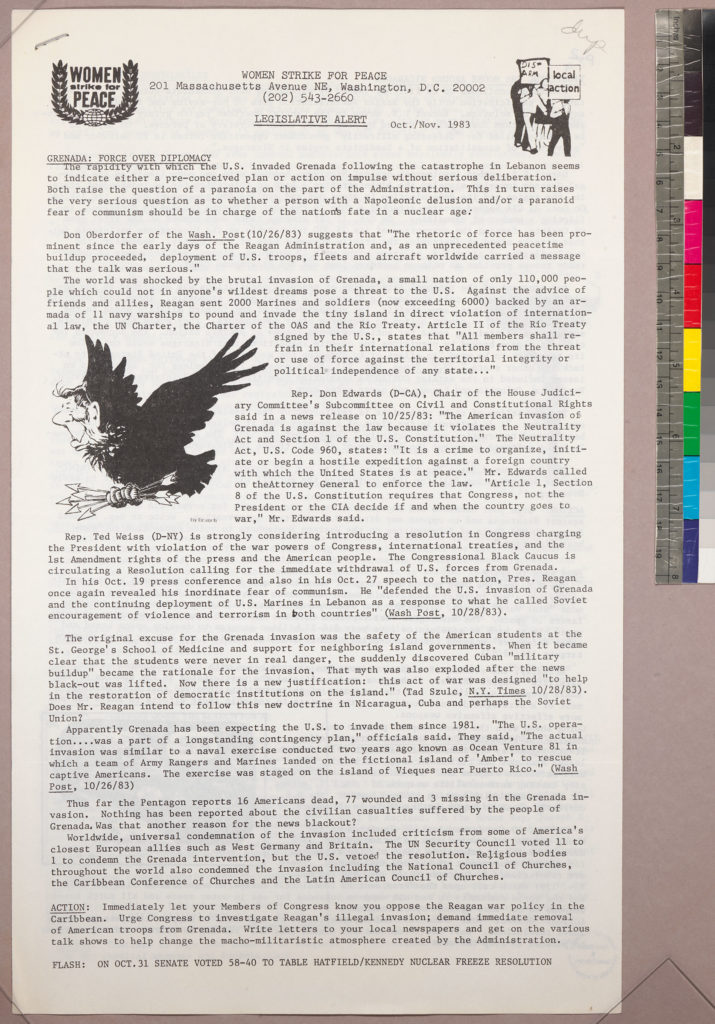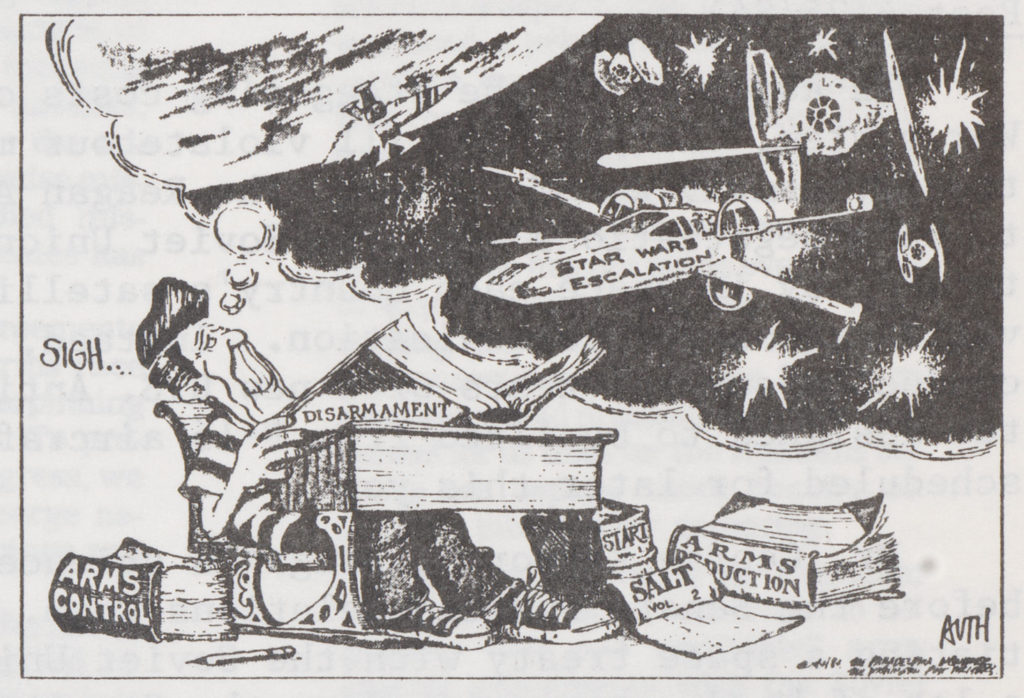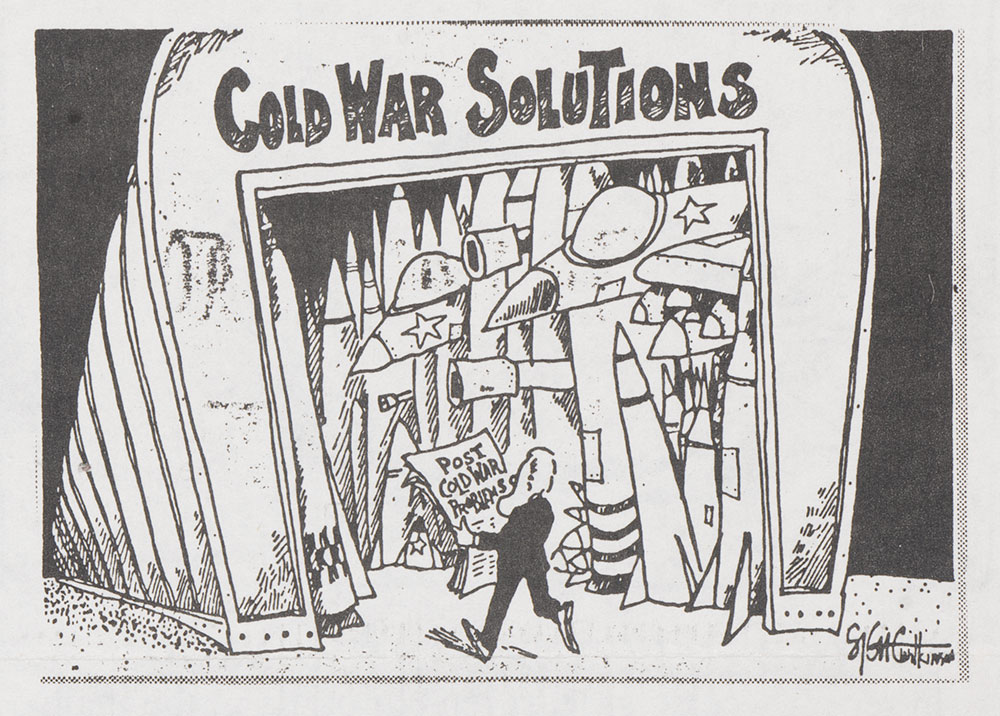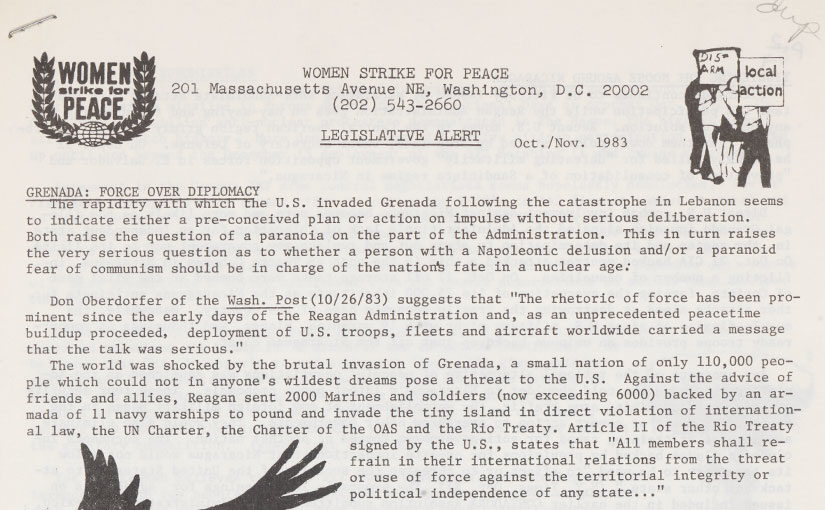We join the Library of Congress, National Archives and Records Administration, National Endowment for the Humanities, National Gallery of Art, National Park Service, Smithsonian Institution and United States Holocaust Memorial Museum in commemorating and encouraging the study, observance and celebration of the vital role of women in American history by celebrating Women’s History Month.
by Rachel Bohlmann, American History Librarian and Curator
RBSC recently acquired a long, but incomplete run of the Women Strike for Peace’s Legislative Alert, the organization’s monthly newsletter. It notified members about Congressional and other governmental actions around nuclear weapons treaties and military initiatives, as well as anti-peace developments around the world. Hesburgh Library’s copies span from 1983 to 1999 with some gaps, as well as the first two issues, from 1963 when the Legislative Newsletter (as it was called then) began.

Women Strike for Peace was an anti-nuclear, anti-war activist group founded in 1961, during a particularly fraught period of the Cold War and its nuclear arms race. The Soviet Union had announced resumption of above-ground nuclear testing and one Washington, D.C. woman, Dagmar Wilson, responded by organizing a one-day demonstration of women for peace and disarmament. That grass-roots action, on November 1, 1961, brought together 50,000 women and girls across 60 US cities and focused the attention of President Kennedy. In its aftermath Women Strike for Peace (WSP) formed.
With their slogan, “End the Arms Race not the Human Race,” WSP contributed to the successful signing of a nuclear test-ban treaty between the US and the Soviet Union in 1963 (Kennedy himself credited the group with this achievement). The organization became one of the most successful social movements in US history as part of the global Cold War peace movement. WSP leaders skillfully used their identities as mothers and homemakers to argue for peace and disarmament, a strategy that appealed to like-minded women around the world and also proved difficult for their opponents to counter.
Opposition to the war in Vietnam became WSP’s main concern during the late 1960s and early 1970s. By the 1980s, however, the group refocused on nuclear disarmament and ending nuclear testing, as well as opposing US military interventions around the world.
Throughout the 1980s and 1990s the Legislative Alert featured several illustrations on its cover page—a small graphic in the upper right corner of women demonstrating and holding signs for disarmament (an homage to the 1961 event that began the movement)—and a political cartoon that captured that month’s peace and disarmament challenges. In its content, the publication sought members’ support of or opposition to pieces of Congressional legislation or presidential military actions or treaties.

In the fall of 1983, for example, WSP criticized President Ronald Reagan’s invasion of Granada, a tiny, independent island nation in the Caribbean with a Communist government. The next spring WSP featured opposition to the president’s nuclear arms buildup as reflected in the administration’s military budget. The accompanying cartoon compares Reagan’s military aspirations to a school boy’s Star Wars-like fantasy. By 1993, after the collapse of the Soviet Union, WSP kept its attention on the world’s dangerous stockpile of nuclear weapons. A fall newsletter shows a cavernous storage unit stuffed with old military hardware in front of which President Bill Clinton considers “Post Cold War Problems.” At the end of the decade WSP continued to push for arms reduction, urging members to ask their representatives to support the Comprehensive Nuclear Test Ban Treaty, which would ban nuclear weapons testing worldwide and slow arms development.

The Women Strike for Peace’s Legislative Alert adds to the library’s collections on the history of peace movements in the United States and globally, and is now available to researchers!
